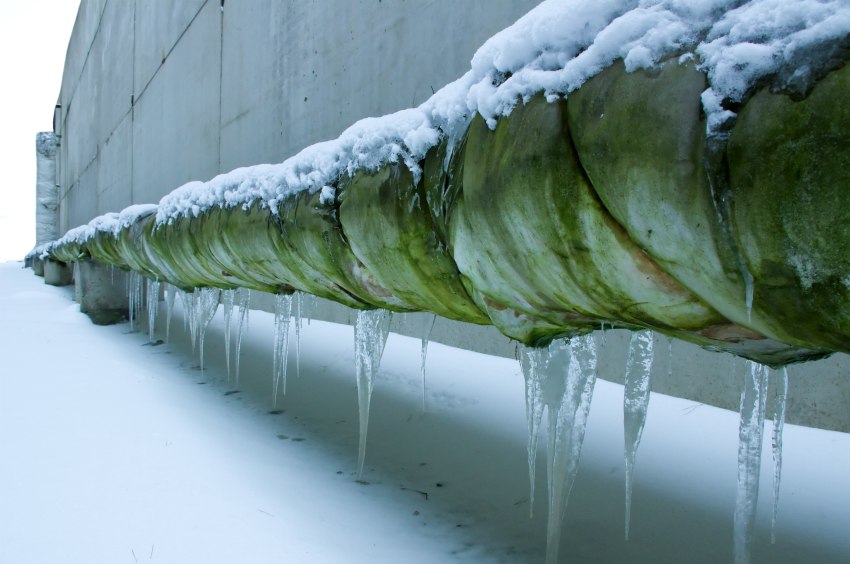05 March 2018
|
| ICS Cool Energy says planned preventative maintenance is the best way to keep chillers performing well, whatever the weather conditions. The company has also put together a cold weather checklist of extra precautions to minimise the risk of downtime – particularly if maintenance is more sporadic than planned. |
Glycol dosing
When the weather reaches freezing temperature, nothing is more crucial than ensuring your chilled water system has the correct level of glycol. Freezing water can cripple your system, causing hundreds, if not thousands of pounds of damage to your system overnight, as well as costs incurred from stopping production. It cannot be overstressed how important maintaining your Glycol level is at this time of year, if you’re unsure about the correct levels for your system, check it here.
Ensure components are cleared for daily use
Your equipment components, such as heat exchangers, are susceptible to debris and damage even in perfect weather conditions, this concern escalates during extreme weather. Ice and snow can combine with existing dirt and debris to clog components, such as your chiller’s condenser, causing costly down time. Prevent this snowball effect by ensuring components are cleared daily. Strainers shouldn’t be neglected, as blockages that reduce the throughput of your chiller’s water can lead to further failure and down time.
Check pipework and insulation for damage
If the worst happens, and the liquid inside your process or chiller freezes, you need to know about it, and fix it, fast. Rapidly dropping temperatures and quickly freezing liquid can cause your pipework to fracture or even burst completely. Perform daily sweeps of your factory, checking your most susceptible areas, and repairing fractures before they turn into burst pipes.
Plan ahead
Although it may seem like it’s too late to make changes now, following the advice above, even in the short term, can prevent disaster and keep production running. In future, you may consider scheduling planned preventative maintenance in the warmer months such as October, meaning that if any concerns or needs for repair do arise, you will have plenty of time to solve them.
Have a contingency plan
No matter the level of preparation, disaster can still strike. Having back-up equipment and your system prepared with stab-ins, will ensure you are ready for a swift exchange and commissioning – keeping production uptime maximised whilst the fault is diagnosed and fixed.
Planned preventative chiller and chilled water system maintenance
If your temperature control equipment is vital to your production process, it is highly recommended that a comprehensive maintenance programme is followed. Depending on how heavily your systems are used, your maintenance checks should be tailored accordingly.
For more information, visit the ICS Cool Energy website.
When the weather reaches freezing temperature, nothing is more crucial than ensuring your chilled water system has the correct level of glycol. Freezing water can cripple your system, causing hundreds, if not thousands of pounds of damage to your system overnight, as well as costs incurred from stopping production. It cannot be overstressed how important maintaining your Glycol level is at this time of year, if you’re unsure about the correct levels for your system, check it here.
Ensure components are cleared for daily use
Your equipment components, such as heat exchangers, are susceptible to debris and damage even in perfect weather conditions, this concern escalates during extreme weather. Ice and snow can combine with existing dirt and debris to clog components, such as your chiller’s condenser, causing costly down time. Prevent this snowball effect by ensuring components are cleared daily. Strainers shouldn’t be neglected, as blockages that reduce the throughput of your chiller’s water can lead to further failure and down time.
Check pipework and insulation for damage
If the worst happens, and the liquid inside your process or chiller freezes, you need to know about it, and fix it, fast. Rapidly dropping temperatures and quickly freezing liquid can cause your pipework to fracture or even burst completely. Perform daily sweeps of your factory, checking your most susceptible areas, and repairing fractures before they turn into burst pipes.
Plan ahead
Although it may seem like it’s too late to make changes now, following the advice above, even in the short term, can prevent disaster and keep production running. In future, you may consider scheduling planned preventative maintenance in the warmer months such as October, meaning that if any concerns or needs for repair do arise, you will have plenty of time to solve them.
Have a contingency plan
No matter the level of preparation, disaster can still strike. Having back-up equipment and your system prepared with stab-ins, will ensure you are ready for a swift exchange and commissioning – keeping production uptime maximised whilst the fault is diagnosed and fixed.
Planned preventative chiller and chilled water system maintenance
If your temperature control equipment is vital to your production process, it is highly recommended that a comprehensive maintenance programme is followed. Depending on how heavily your systems are used, your maintenance checks should be tailored accordingly.
For more information, visit the ICS Cool Energy website.
Content continues after advertisements








